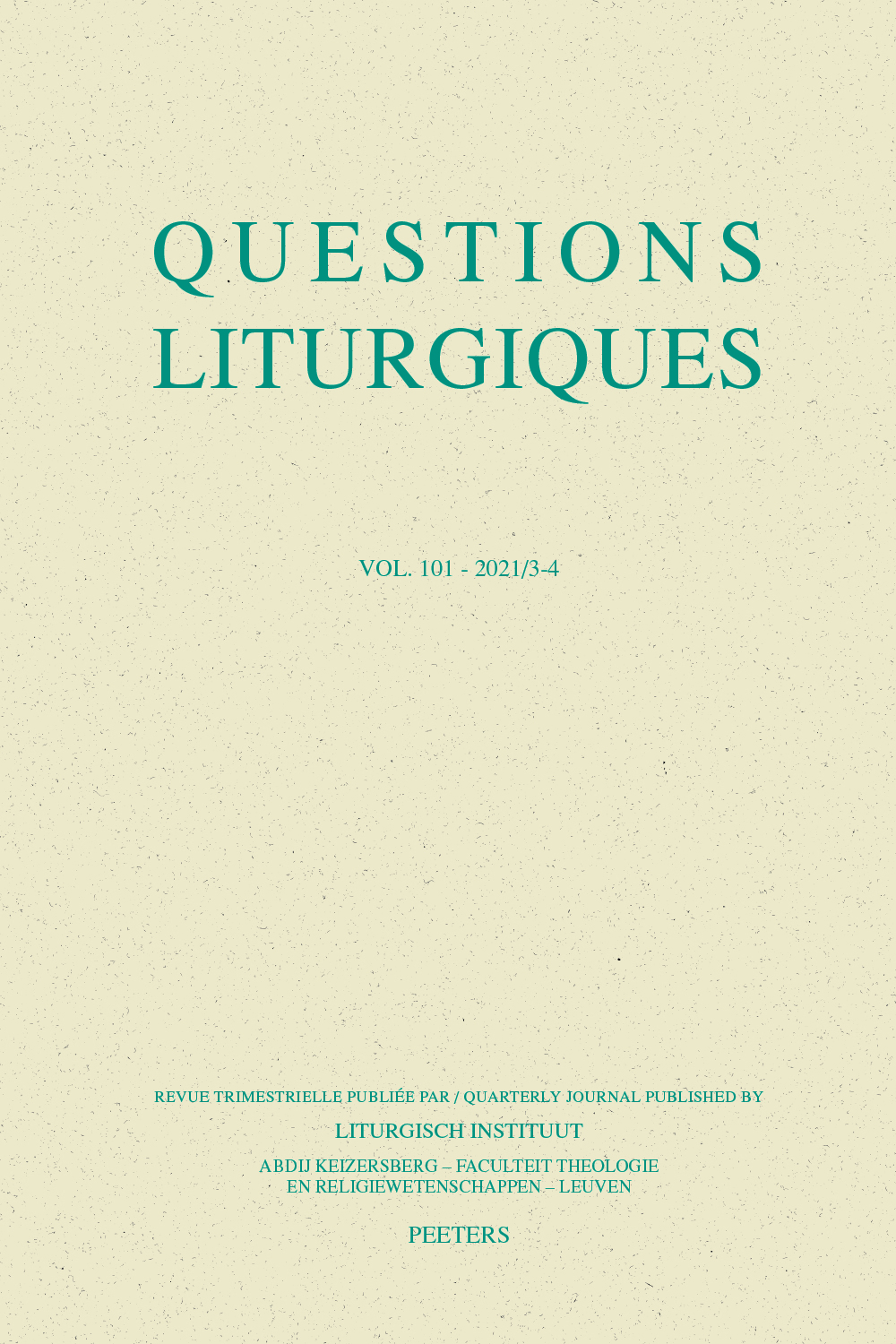 previous article in this issue previous article in this issue | next article in this issue  |

|
Document Details : Title: Art et liturgie Subtitle: Une rencontre insoupçonnée Author(s): CARDITA, Ângelo Journal: Questions Liturgiques/Studies in Liturgy Volume: 98 Issue: 1-2 Date: 2017 Pages: 102-115 DOI: 10.2143/QL.98.1.3275144 Abstract : La liturgie et l’art ont besoin de se rencontrer, mais ce besoin n’est pas ressenti de la même manière par l’une et l’autre. Cette problématique est développée ici à partir de la vocation apophatique de l’art, dans les termes d’Adorno et de Tillich. On donne ainsi un contenu précis à la tension entre l’art et la liturgie: elle consiste, d’un côté, dans la tension entre le danger de l’idolâtrie et la possibilité de la vacuité mystique, et de l’autre côté, dans le risque du subjectivisme. On poursuit en reprenant l’idée élaborée par Piguet que l’art est la création d’un ordre co-créé avec l’œuvre d’art elle-même, ainsi que la proposition de l’art de Turner comme l’un des dérivés «liminoïdes» du rite, pour soutenir que le rite, c’est-à-dire la liturgie, et l’art sont apparentés précisément par la capacité de créer et de manifester une différence. En poursuivant la réflexion, on distingue quatre aspects dans tout processus artistique: l’aspect technique (technê), l’aspect créatif (poiésis), l’aspect réceptif (aisthêsis) et l’aspect contemplatif (theōria). Dans le cas du rite, on trouve les mêmes dimensions. À partir de cette analogie, on peut percevoir que le conflit entre l’art et le rite est en réalité un conflit du regard. Quand l’art entre dans le rite, le danger est que le regard esthétique propre du rite perde ou n’arrive pas à montrer sa qualité théologique, sa theōria. Toutefois, en lui-même, Dieu est beaucoup plus que ce que nous savons de lui. La vérité de Dieu transcende ainsi l’ordre rituel de la liturgie. Par conséquent, la réponse de foi des participants au rite doit se caractériser par la capacité de maintenir ouvertes les représentations théologiques. Le rite est le dispositif religieux de cette ouverture à un Dieu «toujours plus grand», précisément dans la mesure où il laisse l’art opérer en son sein. Finalement, pour mettre à l’épreuve cette perspective, on se concentre sur la toile de l’artiste costaricain Rodolfo Rojas-Rocha, La percepción es apariencia, montrant qu’elle signifie et réalise de façon apophatique la theōria théologique de la liturgie comme vérité et présence. Liturgy and art need to meet, but this need is not felt in the same way by both. This problem is developed here from the apophatic vocation of art, in the terms of Adorno and Tillich. The tension between art and liturgy is thus specified: it consists, on the one hand, in the tension between the danger of idolatry and the possibility of mystical emptiness, and on the other side, in the risk of subjectivism. We continue with the idea elaborated by Piguet that art is the creation of an order cocreated with the artwork itself, as well as Turner’s proposal of art as one of the 'liminoid' derivatives of rite, in order to argue that rite, that is, liturgy, and art are related precisely by the ability to create and manifest a difference. Continuing this reflection, we distinguish four aspects in any artistic process: the technical aspect (technê), the creative aspect (poiésis), the receptive aspect (aisthêsis) and the contemplative aspect (theōria). In the case of rite, we find the same dimensions. From this analogy, one can perceive that the conflict between art and ritual is actually a conflict of sight. When art comes into the rite, the danger is that the aesthetic look characteristic of the rite loses or fails to show its theological quality, its theōria. However, in itself, God is much more than what we know about God. The truth of God thus transcends the ritual order of liturgy. Therefore, the faith response of the rite participants must be characterized by the ability to keep theological representations open. Rite is the religious device of this openness to an 'ever greater' God, precisely to the extent that it allows art to operate within it. Finally, to test this perspective, we focus on the painting of the Costa Rican artist Rodolfo Rojas-Rocha, La percepción es apariencia, showing that it apophatically signifies and performs the theological theōria of liturgy as truth and presence. |
|
